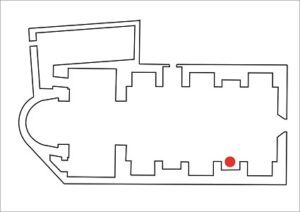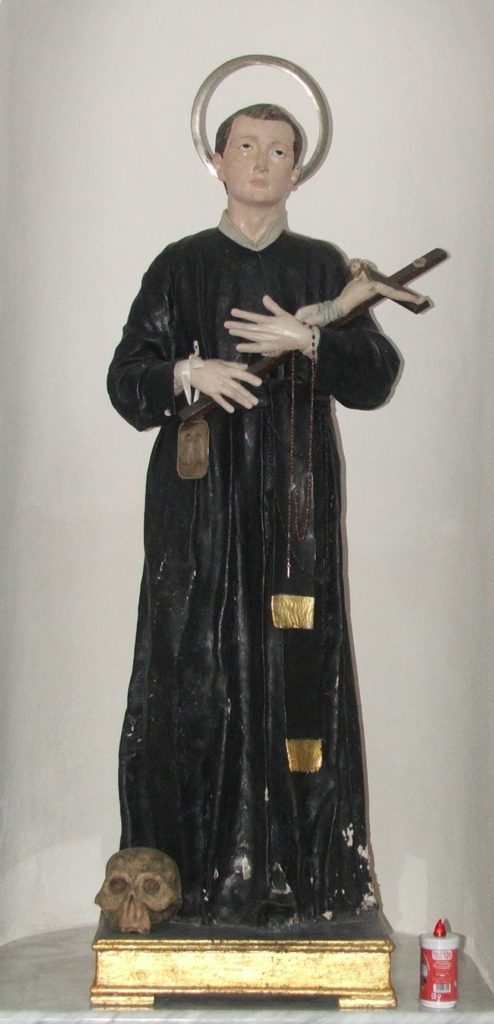San Gerardo Maiella


Chiesa di S. Maria Maggiore
Scultura
San Gerardo Maiella
Sec. XX (prima metà)
Cartapesta modellata / dipinta
Ambito culturale pugliese

Church of S. Maria Maggiore
Sculpture
San Gerardo Maiella
20th century (first half)
Molded / painted papier mache
Apulian cultural background
La scultura proveniente dalla Chiesa di S. Maria del Carmine, venne acquistata a seguito della canonizzazione di San Gerardo, avvenuta nel 1903, per il culto rapidamente diffusosi tra i fedeli di Grottaminarda che numerosi si recavano in pellegrinaggio a Materdomini.
La statua, comunque, doveva già essere a Grottaminarda nel 1946 poiché abbiamo notizia della festa che veniva organizzata in onore del Santo nel luglio di quell’anno.
Il Santo è rappresentato secondo l’iconografia più antica come un giovane vestito con l’abito dei Padri Redentoristi, l’ordine di cui faceva parte, con una croce tra le braccia, il viso rivolto verso l’alto e un teschio vicino ai piedi.
La scultura è in cartapesta e potrebbe essere stata prodotta in una bottega leccese o salentina, terra dove esperti artigiani furono attivi tra la fine del XVIII secolo e la prima metà del Novecento. In quel periodo la Puglia divenne un centro di smistamento di questa tipologia artistica in tutta l’Italia Meridionale.
The sculpture from the Church of S. Maria del Carmine was purchased following the canonization of San Gerardo, which took place in 1903, for the cult quickly spread among the faithfuls of Grottaminarda who numerous went on pilgrimage to Materdomini.
The statue, however, must have already been in Grottaminarda in 1946 since we have news of the feast that was organized in honor of the Saint in July of that year.
According to the oldest iconography, the Saint is represented as a young man dressed in the habit of the Redemptorist Fathers, the order of which he belonged, with a cross in his arms, his face turned upwards and a skull near his feet.
The sculpture is in papier-mâché and may have been produced in a workshop in Lecce or Salento, a land where expert craftsmen were active between the end of the 18th century and the first half of the twentieth century. In that period Puglia became a sorting center for this artistic typology throughout Southern Italy.

